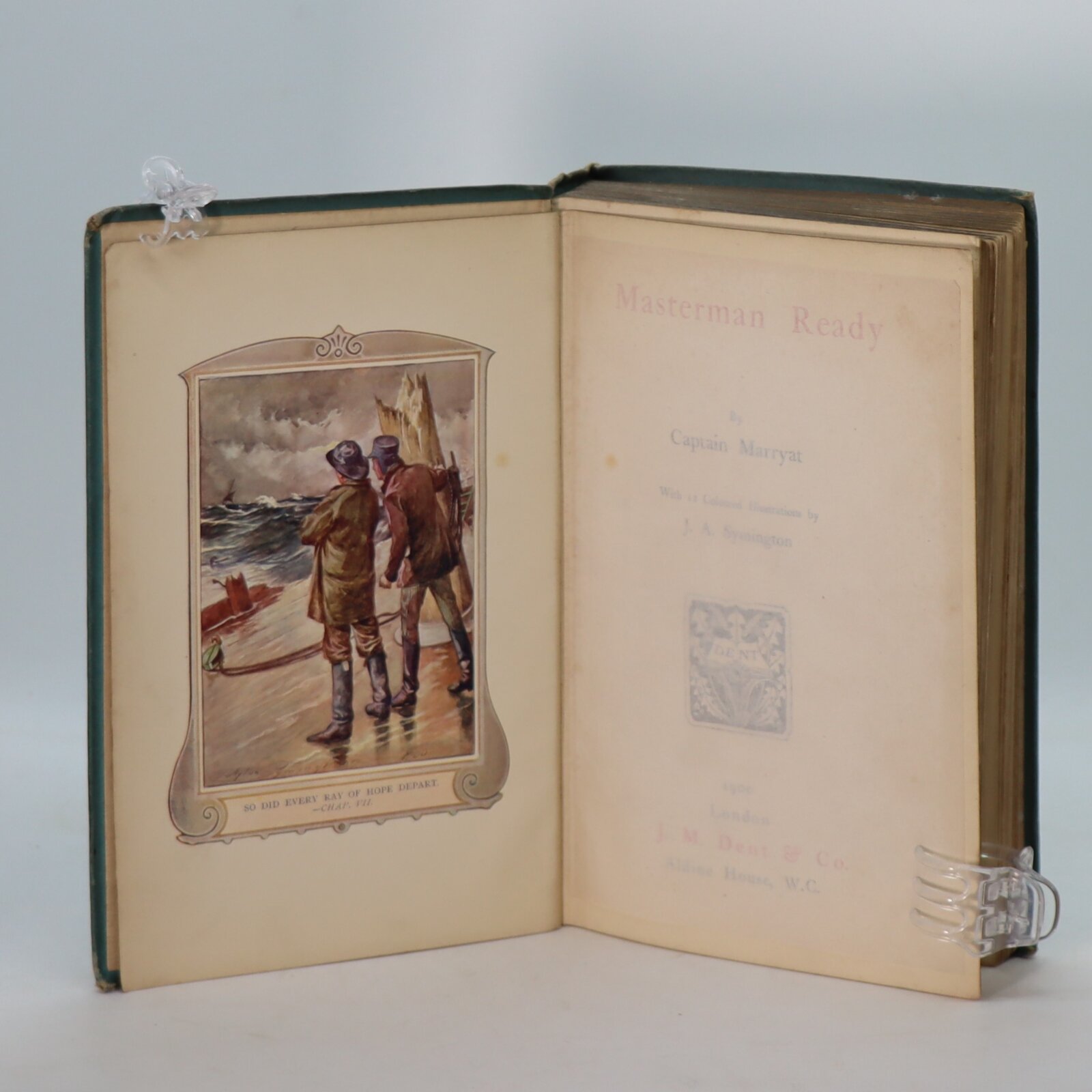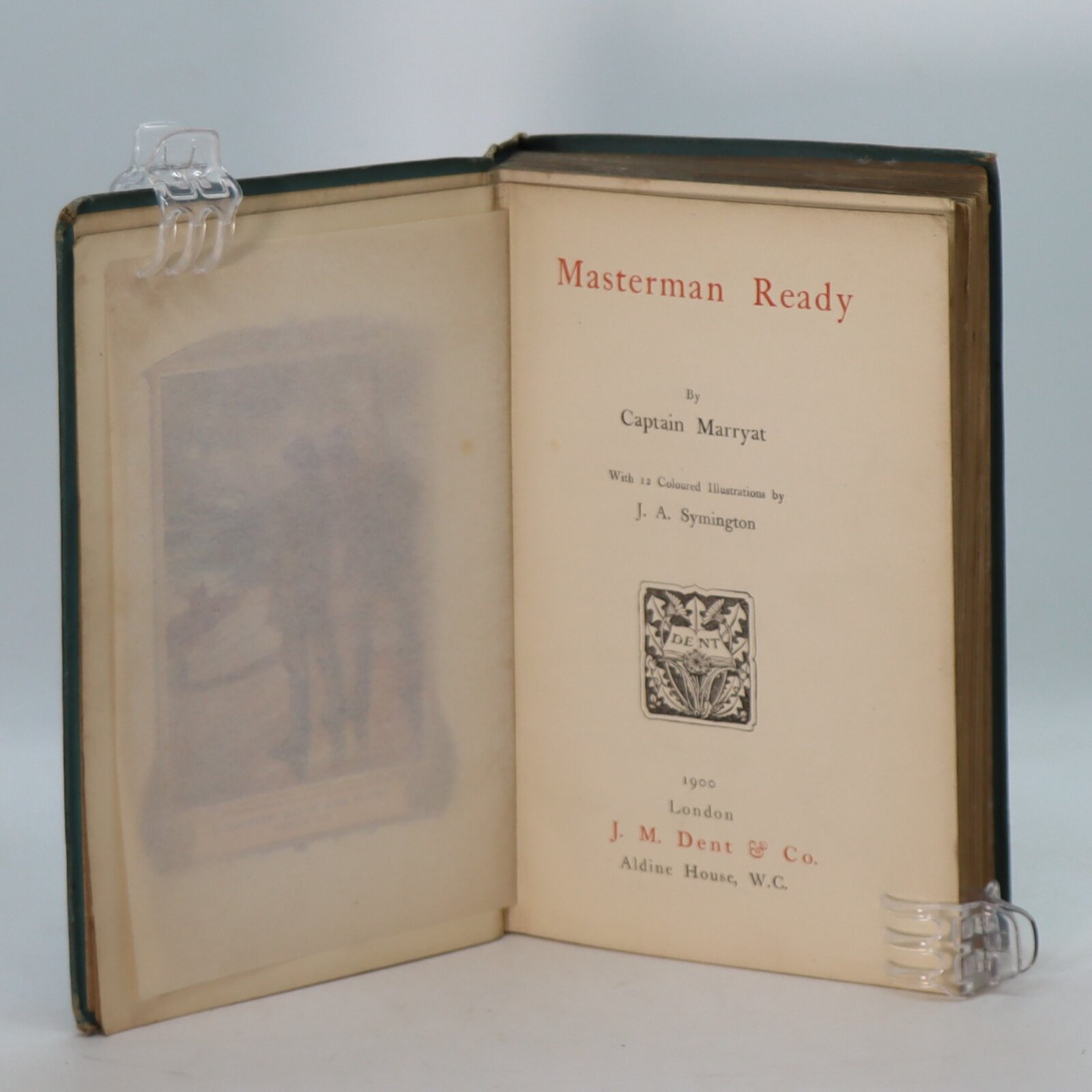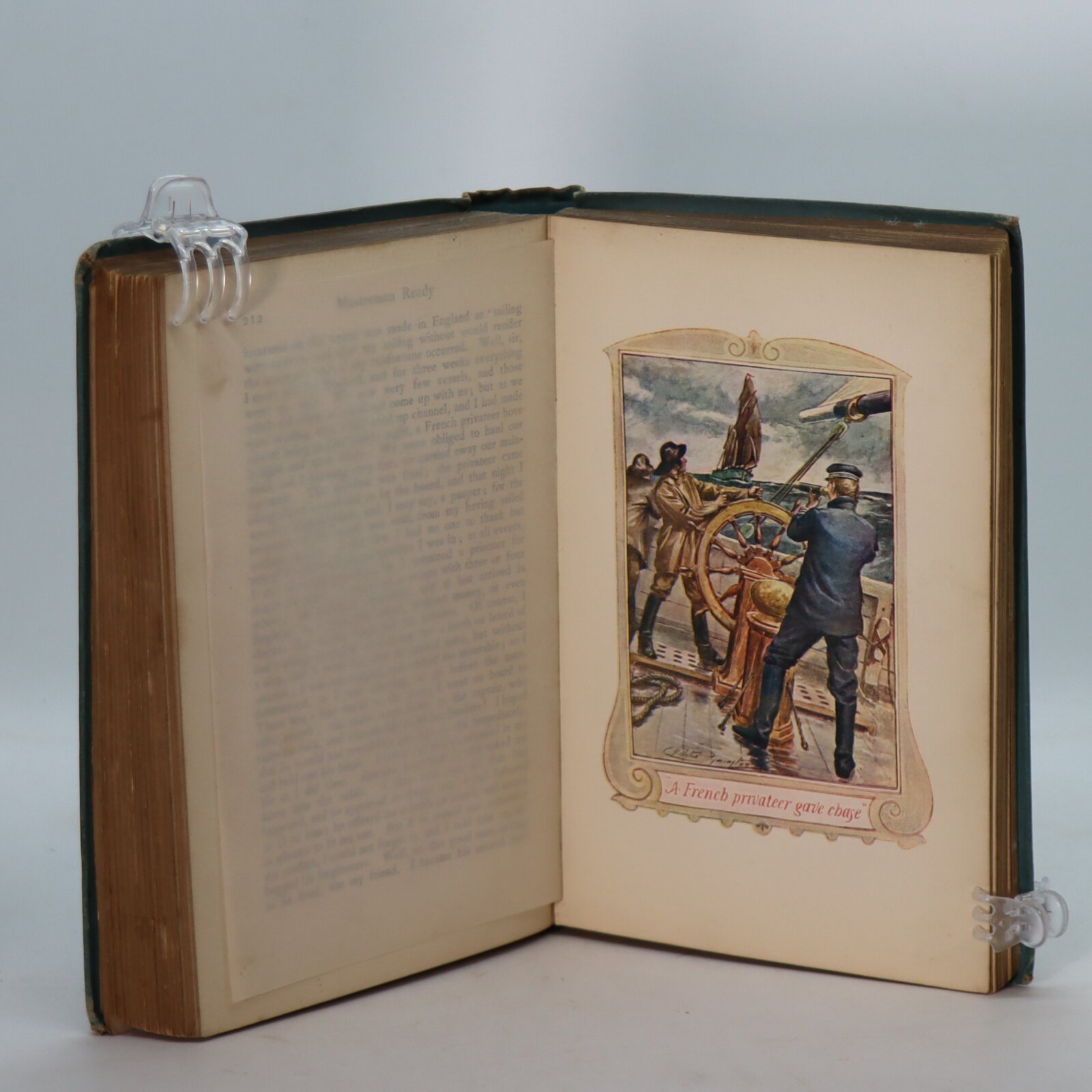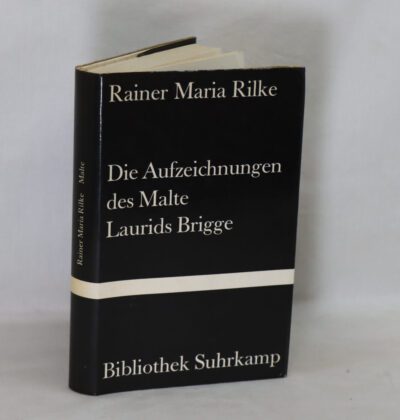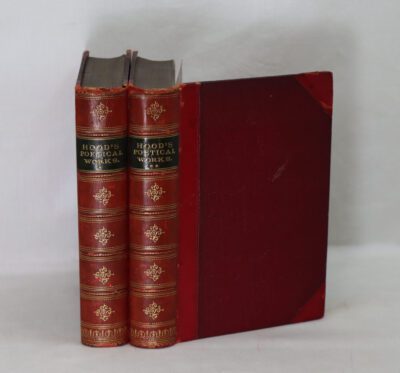Masterman Ready.
By Captain Marryat
Printed: 1900
Publisher: J M Dent & Co. London
| Dimensions | 14 × 20 × 3.5 cm |
|---|---|
| Language |
Language: English
Size (cminches): 14 x 20 x 3.5
Condition: Good (See explanation of ratings)
Your items
Item information
Description
Blue cloth binding with gilt title and ship images on the front boards. Gilt title on the spine.
F.B.A. provides an in-depth photographic presentation of this item to stimulate your feel and touch. More traditional book descriptions are immediately available.
A superb edition
Masterman Ready, or the Wreck of the Pacific is a robinsonade children’s novel published in 1841 by Frederick Marryat. The book follows the adventures of the Seagrave family who are shipwrecked at sea, and survive on a desert island with the assistance of veteran sailor Masterman Ready.
The plot – The Seagrave family are returning to New South Wales on board the Pacific when a storm strikes, wrecking the ship. The crew escape in a lifeboat leaving the passengers to their fate. The Seagrave family, together with their young black female servant Juno, and the veteran sailor Masterman Ready, are shipwrecked on a desert island. The family learn to survive many obstacles, helped by Ready’s long experience of life as a seaman. The worse threat comes when a band of marauders attacks the party, resulting in the death of Ready. Rescue comes when the captain of the Pacific, who the family thought had died in the storm, arrives in a schooner.
Captain Frederick Marryat CB FRS was a Royal Navy officer, a novelist, and an acquaintance of Charles Dickens. He is noted today as an early pioneer of nautical fiction, particularly for his semi-autobiographical novel Mr Midshipman Easy. He is remembered also for his children’s novel The Children of the New Forest, and for a widely used system of maritime flag signalling known as Marryat’s Code.
Masterman Ready was one of the first historical adventures written for young readers. It was written in response to the 1812 book The Swiss Family Robinson by Johann Wyss. As a sailor of long experience, Marryat was annoyed that Wyss had portrayed being shipwrecked as a romantic adventure and he disapproved of the ignorance regarding flora and fauna displayed by Wyss. The Seagrave family in Marryat’s novel have to overcome many hazards, beginning with the initial storm which wrecks the ship and injures the passengers.
The book throughout has a strong moral and pious tone. It contains many long reminiscences of Ready’s life at sea, in which thanks is given to God, and of the comfort to be found in the Bible. Likewise the family learn lessons on natural history and discover evidence for God’s benevolence everywhere.
For many years Masterman Ready was one of the most popular adventure stories for children. It was ranked alongside The Children of the New Forest as the best of Marryat’s books for children and it was at one time thought Masterman Ready would “always be the more popular of the two, from the never ceasing attractiveness of its subject matter.” The book is now less popular than it once was, partly because moral lessons constantly intrude on the action.
From 1832 to 1835, Marryat edited The Metropolitan Magazine. Additionally, he kept producing novels; his biggest success came with Mr Midshipman Easy in 1836. He lived in Brussels for a year, travelled in Canada and the United States, then moved to London in 1839, where he was in the literary circle of Charles Dickens and others. He was in North America in 1837 when the rebellion of that year broke out in Lower Canada, and served with the expeditionary force sent to suppress it.
Marryat was named a Fellow of the Royal Society in recognition of his invention and other achievements. In 1843, he moved to a farm at Manor Cottage, Langham in Norfolk, where he died in 1848. His daughter Florence Marryat later became known as a writer and actress. His son Francis Samuel Marryat completed his father’s late novel The Little Savage.
Marryat’s novels are typical of their time, with concerns of family connections and social status often overshadowing the naval action, but they are interesting as fictional renditions of the author’s 25 years’ experience at sea. Among those who admired them were Mark Twain, Joseph Conrad, and Ernest Hemingway, and as the first nautical novels, served as models for later works by C. S. Forester and Patrick O’Brian, also set in the time of Nelson and telling of young men rising through the ranks through successes as naval officers.
Marryat was also known for short writings on nautical subjects. These short stories, plays, pieces of travel journalism, and essays appeared in The Metropolitan Magazine too, and were later published in book form as Olla Podrida. Marryat’s 1839 Gothic novel The Phantom Ship contained The White Wolf of the Hartz Mountains, which includes the first female werewolf to appear in a short story.
In 1839, Marryat also published his Diary in America, a travelogue that reflects his criticisms of American culture and society. The book and the author were both subject to acts of violence, including the burning of the book and of Marryat’s effigy in public.
Controversy arose among Marryat’s readers. Some criticized him for careless writing, others admired his vivacity about life at sea. His later novels were generally for the children’s market, including his most famous novel today: The Children of the New Forest, published in 1847 and set in the countryside round the village of Sway, Hampshire.
Condition notes
Want to know more about this item?
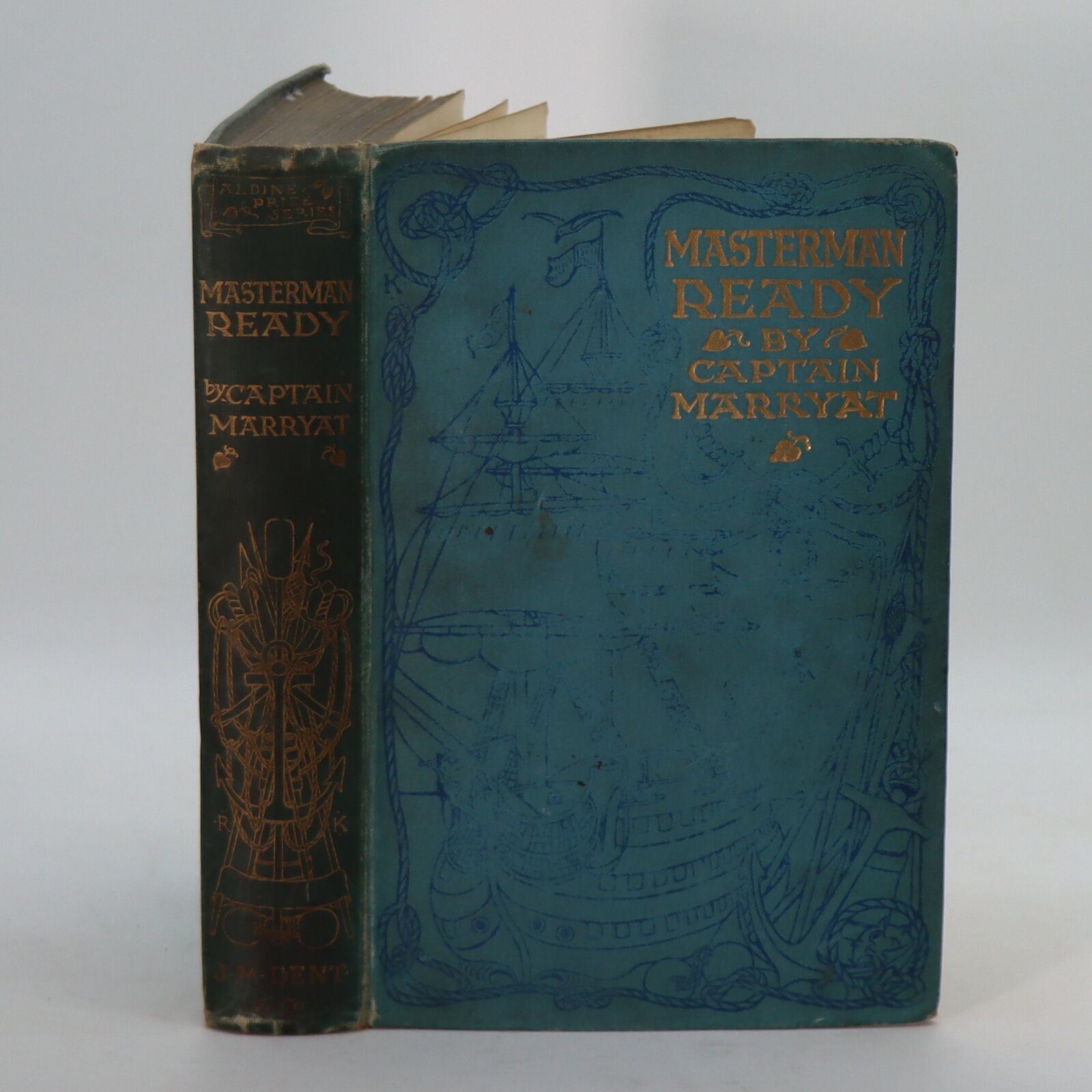
Related products
Share this Page with a friend

